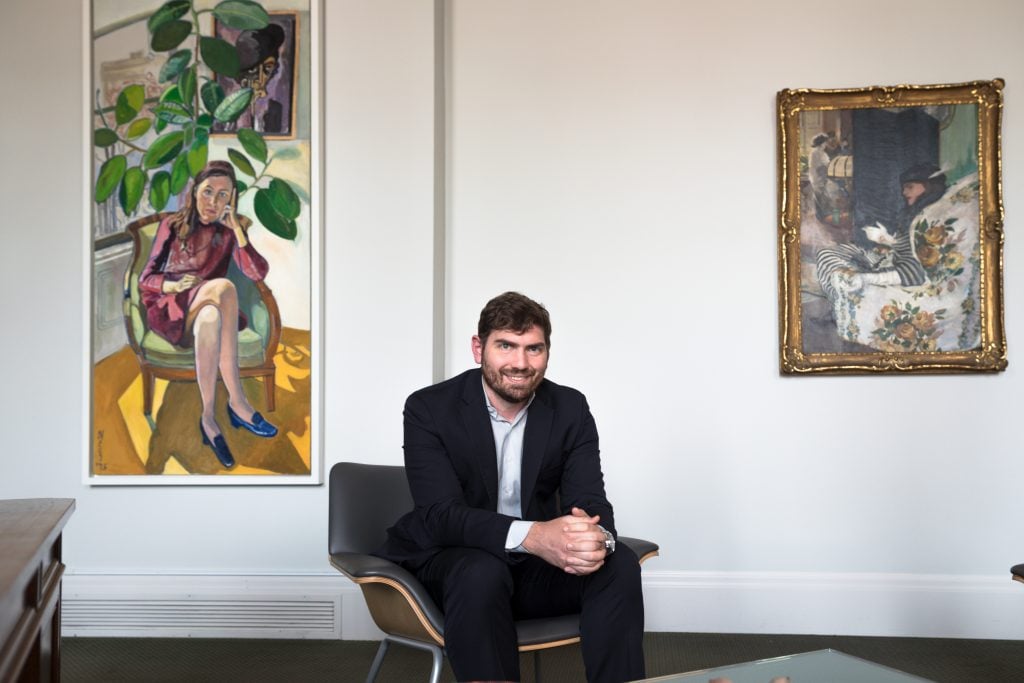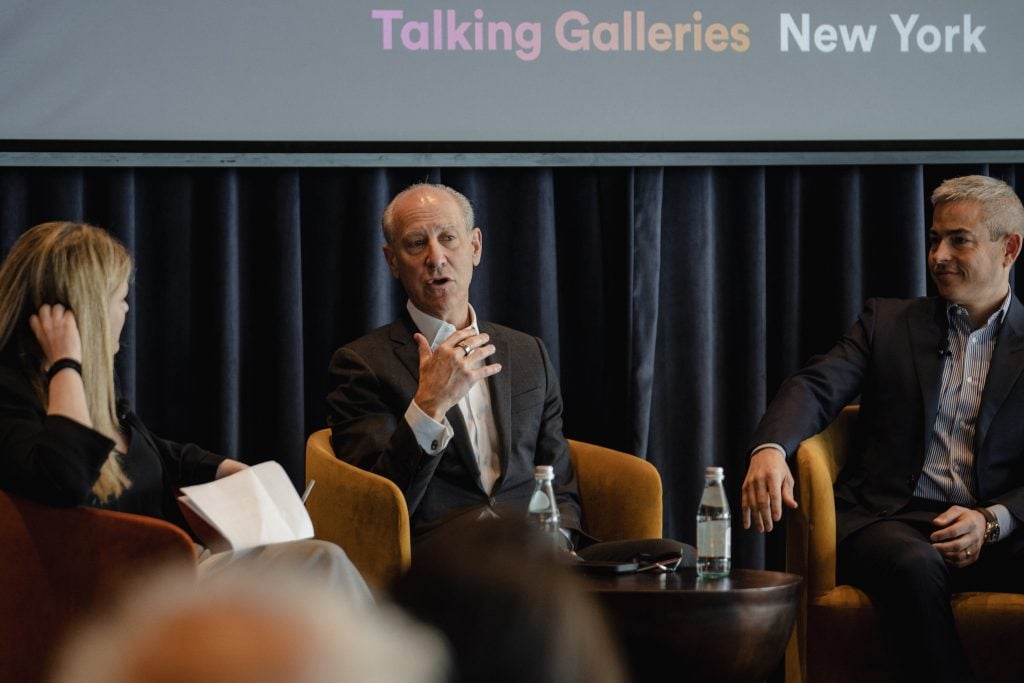Art World
An Unexpected Player Has Begun Providing Auction Guarantees
The Toledo Museum of Art made $500,000 this year using the financial instrument. 'The beauty of it is they win either way,' MoMA's director said.

The Toledo Museum of Art made $500,000 this year using the financial instrument. 'The beauty of it is they win either way,' MoMA's director said.

Katya Kazakina

Museums and auction houses have always been odd bedfellows.
Museums turn to auction houses to sell art deaccessioned from their collections, sometimes sparking controversy, and to organize fundraisers. Auction houses, meanwhile, have become more active as sponsors of museum exhibitions and biennials, raising some eyebrows.
But now the two sectors are collaborating in an intriguing new way.
In what appears to be to be an unprecedented move, the Toledo Museum of Art in Ohio has started providing guarantees for artworks that it wants to acquire at auction. Such deals generated about $500,000 for the institution this year, when it was outbid on two artworks at Sotheby’s, according to its director, Adam Levine, who declined to name the works. In each case, the museum received a percentage of the hammer price, which in once instance doubled its guaranteed bid.
“It allows us to use an existing mechanism for artworks we have a legit strategic interest in,” Levine said in an interview. “We have a clear collecting strategy. We know what we want. But auction is an environment in which it’s exceedingly difficult for museums to be competitive. We have scarce resources. If we don’t get the artwork, we should feel disappointed. At least we get compensated.”
The news of Toledo’s maneuvering came out at the Talking Galleries conference in New York last week, during a panel on the financial survival of public institutions that was moderated by journalist Julia Halperin, a former executive editor of Artnet News. Even Glenn Lowry, the leader of the Museum of Modern Art, said that worrying about its finances keeps him awake at night. Which is why the Toledo Museum’s experiments with auction guarantees got his thumbs up.
“The beauty of it is they win either way,” Lowry said during the panel. “They get a work of art they want to buy or they make some money. That’s creative thinking. And we just need more and more of that.”

Julia Halperin, Glenn Lowry, and Pete Scantland. Courtesy Talking Galleries.
Levine began laying the groundwork for the strategy over a decade ago. In 2013, he discussed the possibility of using guarantees to expand revenue sources in an article published in Museum Management and Curatorship, a peer-reviewed journal for the museum world.
”A financial instrument that has become relatively important to the art market in recent years may provide an opportunity for art museums to develop a new strategy to supplement their current funding sources,” Levine wrote. “The instrument, known as an ‘auction guarantee,’ provides a risk optimal method for art museums to generate revenue to supplement their endowment, membership, and admissions income.”
That it took so long to make his idea become a reality is a testament to a slow-moving field that is just beginning to wake up to the fact that the funding models of many organizations are unsustainable.
“I worry a lot that those of us inside the museum world operate with a set of assumptions about the sanctity of what we do,” Lowry said at the conference. “And I think the public has moved way beyond that. What we have to do collectively as institutions is lighten up.”
The Toledo Museum’s approach is relatively straightforward. When a work it wants to acquire comes up for auction, curators and conservators are dispatched to inspect it, and a market report is drawn up. If everything looks good, its art committee approves the purchase.
The museum is on the hook to place a bid if there isn’t another. And that’s exactly the hope: to get the artwork it wants at the price it wants. If a bidding war ensues and the work sells for more to another party, the museum gets a cut of the overage.
“No money comes from anywhere to write a guarantee,” Levine said of his budget. “You just sign a piece of paper. Nothing goes into escrow. There’s no interest foregone on anything.”
The museum secures the guarantee against its operating endowments, not against its art funds. (If it wins the work, it pays from its art funds.)
“That allows us to use the proceeds in unrestricted ways,” Levine said, of the revenue from a guarantee deal. “For art acquisitions, operating, for capital. And we say that expressly so that it meets the audit standards to allow us to use the proceeds flexibly.”
That flexibility is key for nonprofit institutions, according to Deana Haggag, a program officer at the Mellon Foundation, who was also a panelist. Funds raised from selling art, for example, are limited to making new acquisitions and the direct care of collections. But museums have endless needs in terms of operations and programming.
The $500,000 that the Toledo Museum earned from its guarantee deals would be considered a substantial gift from a patron, Levine said, and it is enough to upgrade the plumbing in its 1912 home. That is an ideal use for the funds, since it can be difficult to line up a donation from an individual for such unglamorous projects. “I know very few named bathrooms,” he said. (The sum is also more than double what it earns annually from its cafe and events space.)
More museums are considering getting into the auction guarantee business, according to Nina del Rio, head of Sotheby’s Museum and Corporate Art Group, who worked with the Toledo Museum of Art on its two guarantee deals.
However, it is easy to understand why some may demure. A nonprofit engaging in what can look like financial speculation might be unsavory to some. (Deep-pocketed collectors, ultimate market insiders, and the auction houses themselves are the usual sources for guarantees.) And if museums were to begin guaranteeing a vast number of lots simply to make money, they could be accused of deviating from their mission.
That is not what Toledo is doing, Levine said, anticipating such criticism.
“We are not turning a museum into a proprietary trading desk,” he said. “Our primary interest is for the work to enter the collection. We are using guarantees as a strategy. It’s not a cure-all, but it helps.”